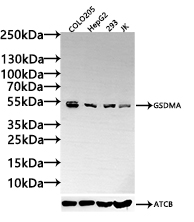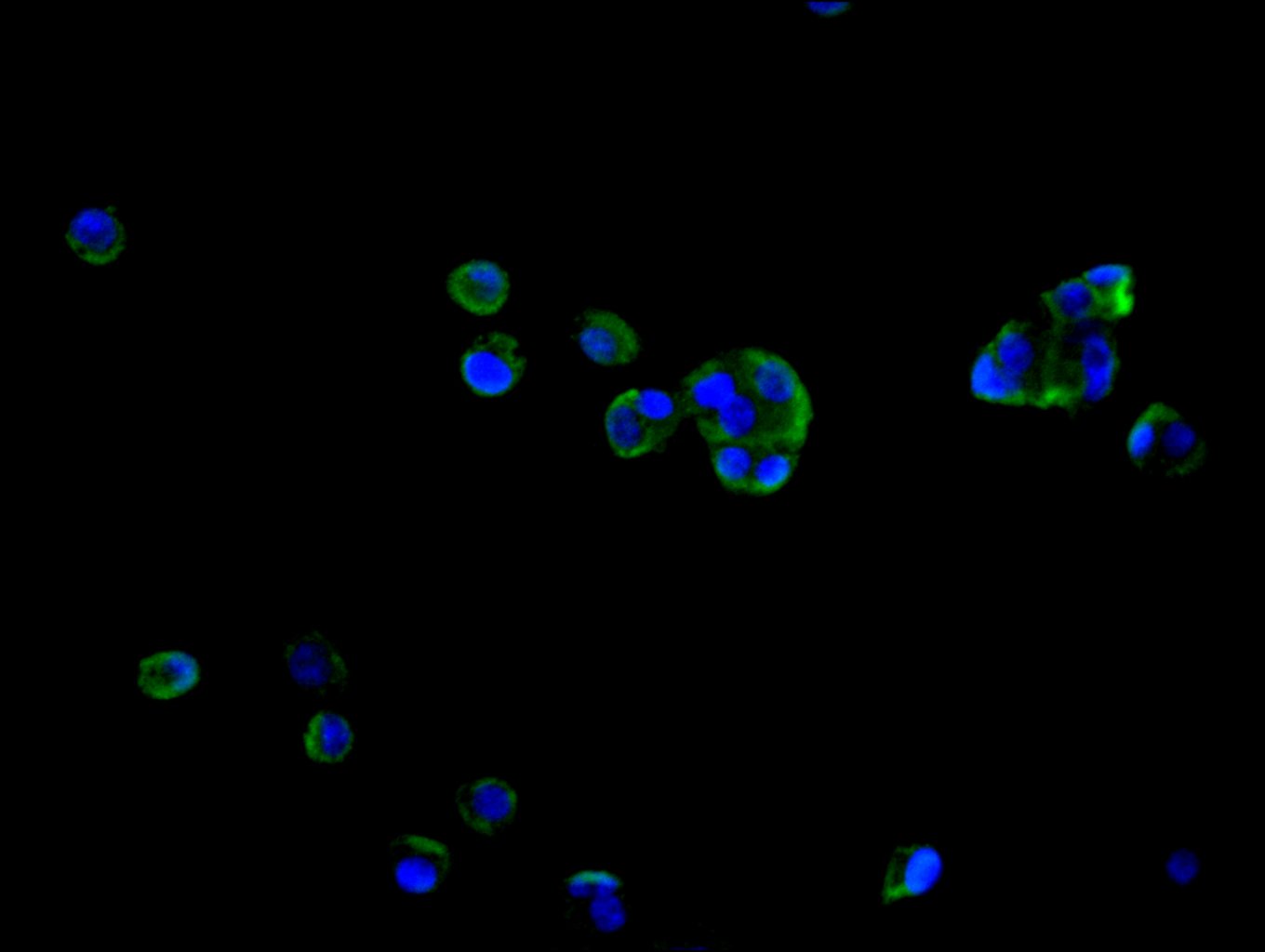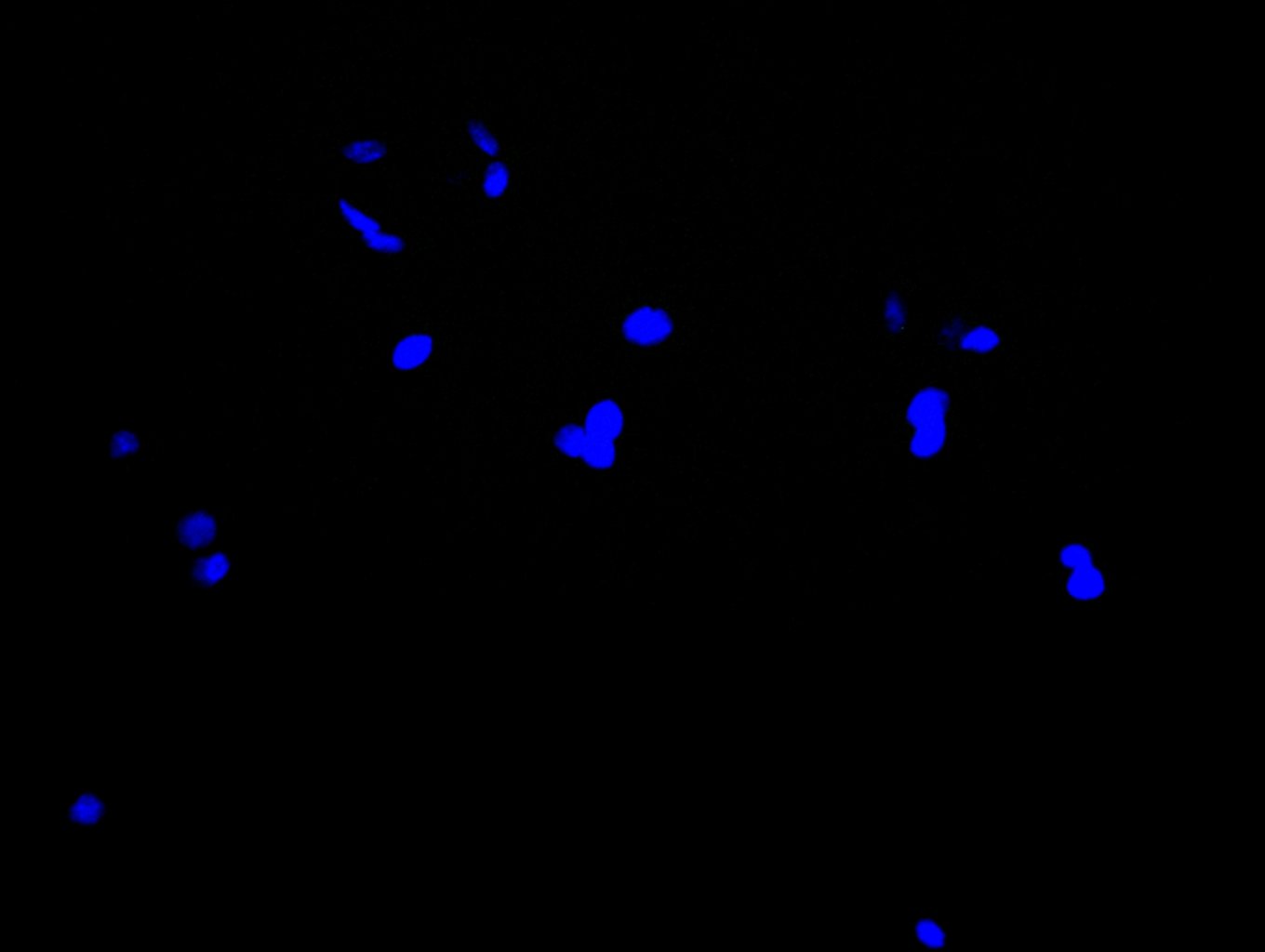The product CSB-PA850415LA01HU is an IgG rabbit polyclonal GSDMA antibody suitable for the recognition of human GSDMA by ELISA, WB, IHC, and IF. The recombinant human GSDMA protein (64-172aa) is used to immunize the rabbit to generate the GSDMA polyclonal antibody. GSDMA antibody is available in the non-conjugated IgG antibody form. Its purity is over 95% using protein G purification.
The GSDMA protein act as a regulator of cell death and inflammation. GSDMA is primarily expressed in epithelial tissues, where it has been shown to play a critical role in regulating immune responses and tissue homeostasis. It also participates in various physiological processes, including skin development and maintenance of the skin barrier function. Dysregulation of GSDMA causes skin disorders, inflammatory bowel disease, cancer, and other diseases.









